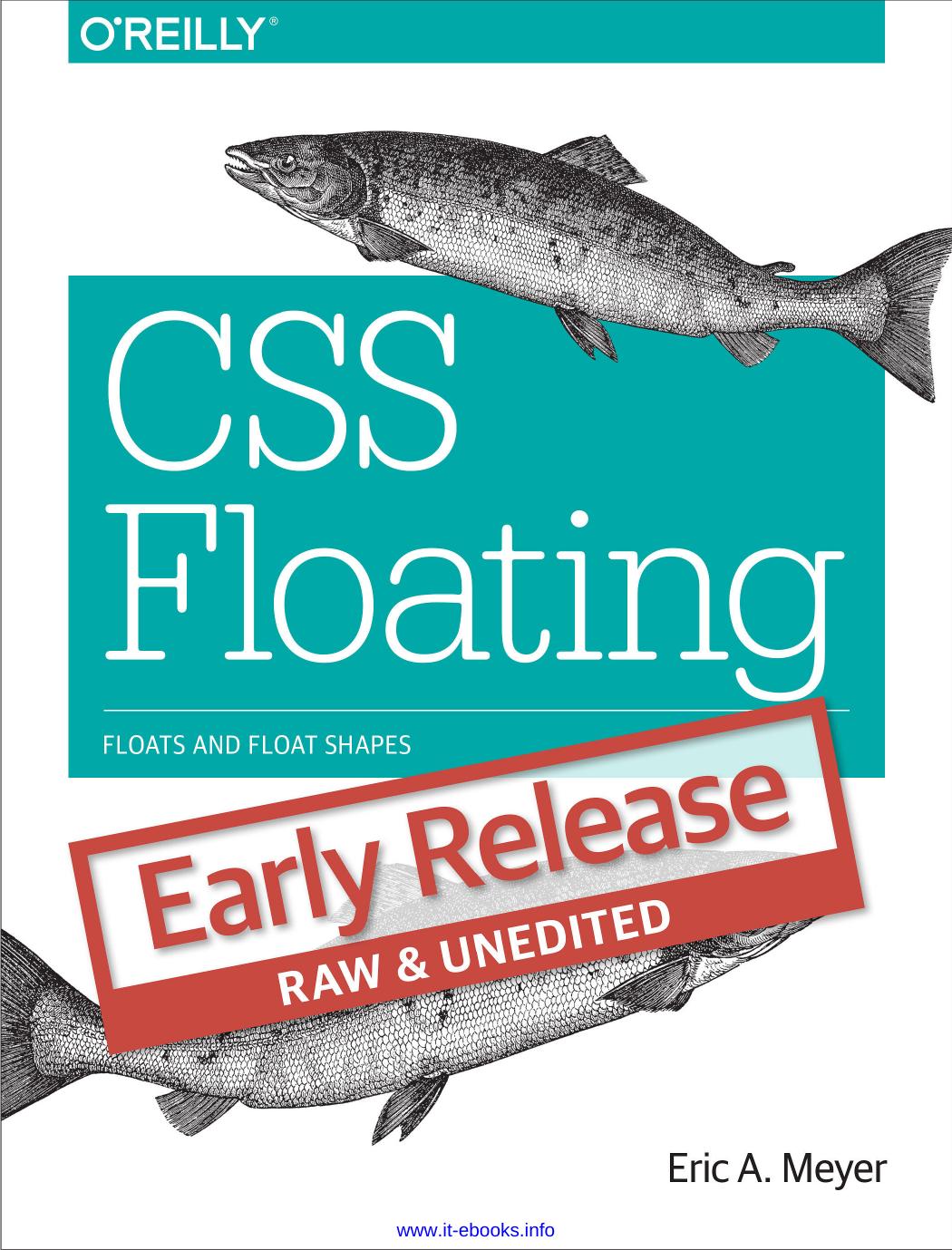CSS Floating: Floats and Float Shapes by Eric A. Meyer

Author:Eric A. Meyer [Meyer, Eric A.]
Language: eng
Format: azw3, pdf
Publisher: O'Reilly Media
Published: 2016-01-12T16:00:00+00:00
h3 {clear: both;} <h3 style="clear: none;">What's With All The Latin?</h3>
Figure 1-24. Not clear at all
In CSS1 and CSS2, clear worked by increasing the top margin of an element so that it ended up below a floated element, so any margin width set for the top of a cleared element was effectively ignored. That is, instead of being 1.5em, for example, it would be increased to 10em, or 25px, or 7.133in, or however much was needed to move the element down far enough so that the content area is below the bottom edge of a floated element.
In CSS 2.1, clearance was introduced. Clearance is extra spacing added above an element’s top margin in order to push it past any floated elements. This means that the top margin of a cleared element does not change when an element is cleared. Its downward movement is caused by the clearance instead. Pay close attention to the placement of the heading’s border in Figure 1-25, which results from the following:
Download
CSS Floating: Floats and Float Shapes by Eric A. Meyer.pdf
This site does not store any files on its server. We only index and link to content provided by other sites. Please contact the content providers to delete copyright contents if any and email us, we'll remove relevant links or contents immediately.
The Mikado Method by Ola Ellnestam Daniel Brolund(20603)
Hello! Python by Anthony Briggs(19898)
Secrets of the JavaScript Ninja by John Resig Bear Bibeault(18207)
Dependency Injection in .NET by Mark Seemann(18107)
The Well-Grounded Java Developer by Benjamin J. Evans Martijn Verburg(17575)
Kotlin in Action by Dmitry Jemerov(17183)
Sass and Compass in Action by Wynn Netherland Nathan Weizenbaum Chris Eppstein Brandon Mathis(13264)
Secrets of the JavaScript Ninja by John Resig & Bear Bibeault(11381)
Jquery UI in Action : Master the concepts Of Jquery UI: A Step By Step Approach by ANMOL GOYAL(9386)
Svelte with Test-Driven Development by Daniel Irvine(8139)
Test-Driven Development with PHP 8 by Rainier Sarabia(7888)
Layered Design for Ruby on Rails Applications by Dementyev Vladimir;(7707)
Web Development with Django by Ben Shaw Saurabh Badhwar(7216)
React Application Architecture for Production by Alan Alickovic(6899)
Software Architecture for Web Developers by Mihaela Roxana Ghidersa(4980)
Audition by Ryu Murakami(4887)
Accelerating Server-Side Development with Fastify by Manuel Spigolon Maksim Sinik & Matteo Collina(4837)
Solidity Programming Essentials by Ritesh Modi(4564)
Build Your Own Web Framework in Elixir by Aditya Iyengar(4438)
